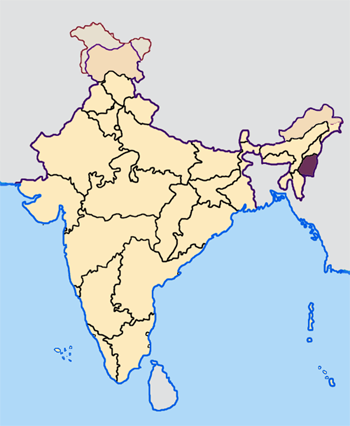Manipur Violence: Understanding the Current Situation of Violence and Its Causes
Ethnic strife has deeply engulfed Manipur, a small state in northeastern India, leading to what many describe as a state of civil war. The conflict revolves around a battle for land and power between the two largest ethnic groups, the majority Meitei and the minority Kuki.

Recently, a shocking video surfaced, revealing a disturbing incident from May, where Meitei men attacked two Kuki women. These women were stripped naked and paraded after their village was razed, highlighting the ongoing use of terror against women in the region.
Manipur is situated in the hilly northeastern part of India, east of Bangladesh, and shares borders with Myanmar. It is estimated to be home to around 3.3 million people. The majority of the population, more than half, consists of Meiteis, while the remaining 43% comprises Kukis and Nagas, who are the predominant minority tribes.
The violence, which commenced in May, has resulted in a death toll of at least 130 people, with around 400 wounded. Furthermore, over 60,000 individuals have been displaced from their homes as authorities, including the army, paramilitary forces, and police, struggle to quell the escalating violence.
The repercussions of this conflict have been devastating, with police armouries being looted, numerous churches and temples destroyed, and entire villages left in ruins. The situation remains highly volatile and continues to demand urgent attention and resolution.
What triggered the conflict?
The tensions escalated when the Kuki community initiated protests against the demands made by the Meiteis to be granted official tribal status. The Kukis opposed this move, arguing that it would further strengthen the Meiteis’ already significant influence on the government and society, potentially allowing them to acquire land or settle in areas predominantly inhabited by Kukis.
However, the underlying reasons for the conflict are numerous. The Kukis claim that the Meitei-led government’s supposed war on drugs serves as a cover to uproot their communities. Moreover, illegal migration from Myanmar has added to the tensions. The region is also grappling with land pressure due to a growing population, and unemployment has driven many young people towards various armed groups.
Who is involved in the fighting? For decades, militias representing the Meitei, Kuki, and Naga communities have engaged in conflicts with each other due to conflicting demands for homelands and religious differences. These groups have also clashed with India’s security forces in the past. However, the recent escalation of violence is primarily between the Meitei and Kuki communities.
Who are the Kuki and Meitei communities?
The Meitei community traces its roots to Manipur, Myanmar, and the surrounding regions. While the majority of Meiteis are Hindus, some follow the Sanamahi religion. On the other hand, the Kukis, who are mostly Christians, have spread across the northeastern states of India, and many of them in Manipur can trace their origins back to Myanmar as well.
Geographically, Meiteis predominantly inhabit the Imphal valley, while the Kukis reside in the surrounding hills and beyond.
Why are women being targeted and humiliated?
The recent video depicting the attack on Kuki women is a distressing example of how rape and sexual assault are being used as tools of violence in this conflict. Such atrocities can often lead to a vicious cycle of revenge attacks.
According to local media reports, the attack in May occurred following false allegations that a Meitei woman had been raped by Kuki militiamen. As a result, a fresh and lethal cycle of retaliatory violence was initiated, with Kuki tribal women allegedly becoming the targets of Meitei mobs.
What is the response of the central government?
Until the recent emergence of the video showing the 4 May attack, Prime Minister Narendra Modi had maintained silence regarding the violence in Manipur. However, after the video came to light, he expressed his deep concern and condemnation for the incident, stating that it had “shamed India” and vowed that those responsible would not escape justice. Nevertheless, many Indians are questioning why it took him so long to address the situation publicly.
To address the escalating violence, the Indian government has deployed a significant force of 40,000 soldiers, paramilitary troops, and police to the region in an effort to quell the ongoing unrest. Despite calls from tribal leaders for direct rule, the government has resisted implementing such measures.
However, despite these efforts, the violence continues to spread, leading to the displacement of more villagers from their homes.
According to a tweet from the Manipur Police, they have registered a case of gang-rape and murder.
